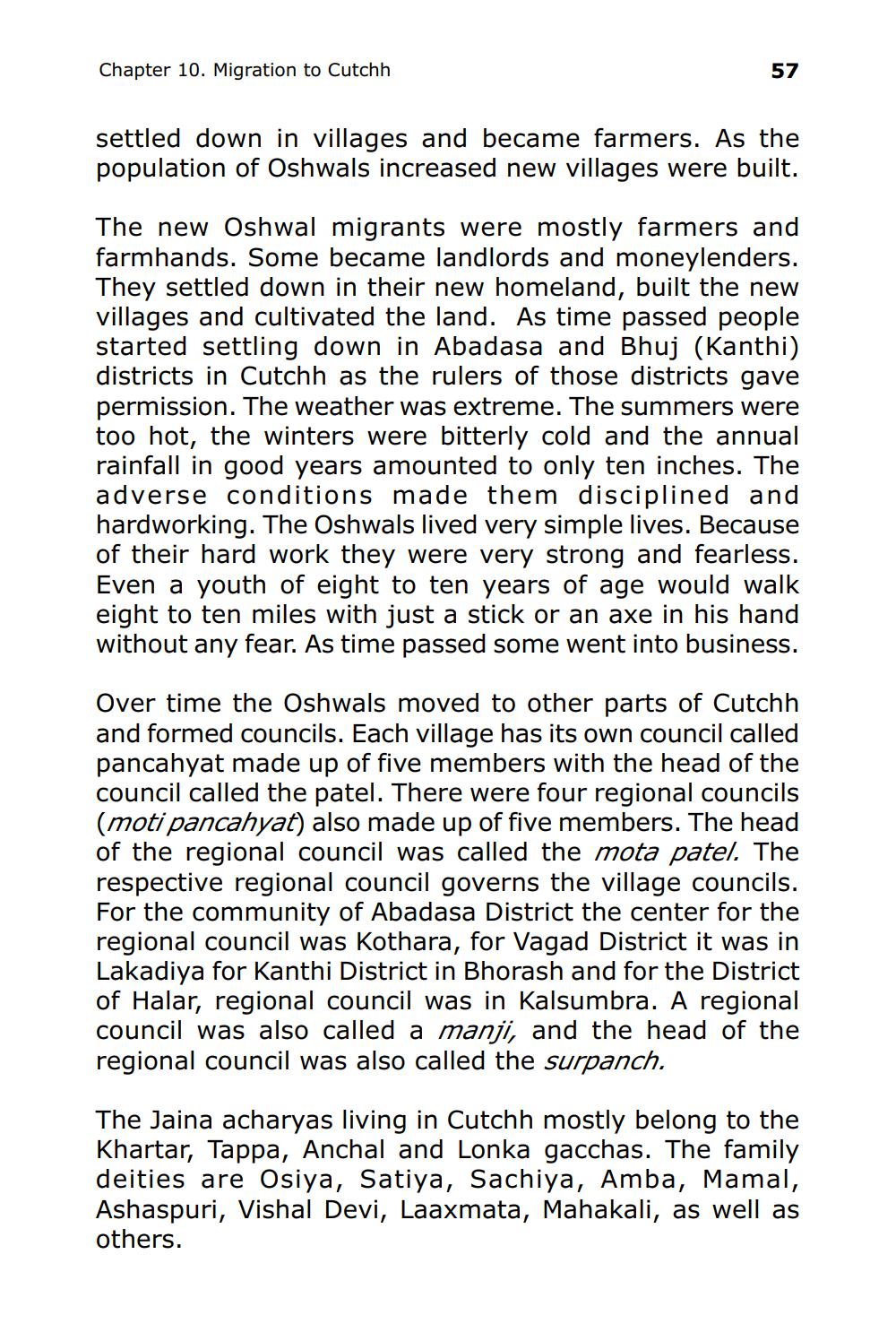________________
Chapter 10. Migration to Cutchh
57
settled down in villages and became farmers. As the population of Oshwals increased new villages were built.
The new Oshwal migrants were mostly farmers and farmhands. Some became landlords and moneylenders. They settled down in their new homeland, built the new villages and cultivated the land. As time passed people started settling down in Abadasa and Bhuj (Kanthi) districts in Cutchh as the rulers of those districts gave permission. The weather was extreme. The summers were too hot, the winters were bitterly cold and the annual rainfall in good years amounted to only ten inches. The adverse conditions made them disciplined and hardworking. The Oshwals lived very simple lives. Because of their hard work they were very strong and fearless. Even a youth of eight to ten years of age would walk eight to ten miles with just a stick or an axe in his hand without any fear. As time passed some went into business.
Over time the Oshwals moved to other parts of Cutchh and formed councils. Each village has its own council called pancahyat made up of five members with the head of the council called the patel. There were four regional councils (moti pancahyat) also made up of five members. The head of the regional council was called the mota patel. The respective regional council governs the village councils. For the community of Abadasa District the center for the regional council was Kothara, for Vagad District it was in Lakadiya for Kanthi District in Bhorash and for the District of Halar, regional council was in Kalsumbra. A regional council was also called a manji, and the head of the regional council was also called the surpanch.
The Jaina acharyas living in Cutchh mostly belong to the Khartar, Tappa, Anchal and Lonka gacchas. The family deities are Osiya, Satiya, Sachiya, Amba, Mamal, Ashaspuri, Vishal Devi, Laaxmata, Mahakali, as well as others.




